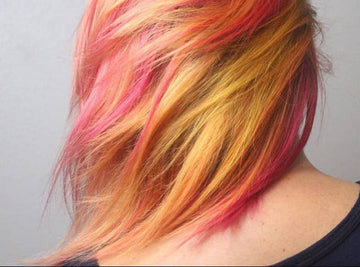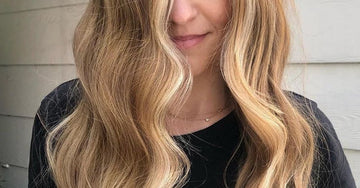Low porosity is one of the main reasons why you might have been suffering from product buildup lately. When you have low porosity hair, it’s difficult for your hair to absorb the nutrients coming from hair products like shampoo and conditioner. As a result, these will all buildup on top of your hair, causing flakes and annoying particles that can also be itchy and irritating sometimes.
But aside from product buildup, you can also suffer from a type of hair that’s hard to style and manage. No matter how hard you try to produce volume in your hair, it will just fall flat after you style it. It will always look dull and lifeless–which is a nightmare for almost all ladies out there.
However, it’s not the end of the world for those who have low porosity hair. There are still some ways on how to get over it. If you want to learn more about this type of hair, let’s dig deeper and read this article.
What is low porosity hair?
To make the definition simpler, hair porosity is about your hair’s ability to absorb nourishment and moisture from the products you’re using. If you have low porosity hair, it just means your hair is more likely rejecting the moisture it needs and it’s harder for it to retain the nourishment within your scalp.
The porosity of your hair affects how oils and moisture come into the different layers of your hair:
- Cuticle – This is the protective layer of the hair and the toughest among the other layers. This is made up of smaller cuticles overlapping with each other to protect your hair.
- Cortex – Cortex, on the other hand, is the thickest layer of your hair. It has fibrous proteins that give color to your hair.
- Medulla – And lastly, medulla is the softest part of your hair and is located in the central area.
All these three contribute to the absorption of moisture your hair needs. For your hair to stay healthy, it needs water, oils, and other moisturizing products that will pass through these layers. When your hair has low porosity, your hair will end up feeling lifeless and boring. It can even cause product buildup especially if you use a wide range of hair products on a regular basis.
Causes of low porosity hair

How porous your hair is depends on your genetics. So if you have someone in your family that has low porosity hair, it probably already runs in your family and there’s a higher chance that you might also have low porosity hair. But this isn’t just the only factor to consider to know if you have low porosity hair.
Styling and maintenance procedures like blow drying, bleaching, straightening, overwashing and using a wide range of hair products can damage your hair in the long run. This can cause your cuticle to open up and make it hard for your scalp and hair to retain its moisture. If you’ll not solve this problem, your hair will just spit out the nourishment everytime you try to hydrate and moisturize it.
Too much exposure to ultraviolet can also contribute to increased porosity in your hair. To protect your hair from the sun, always wear a hat or cap, or use an umbrella everytime you go out. In this way, you control the ultraviolet rays striking directly through your hair.
Signs of low porosity hair
The process of getting over with low porosity hair is to know the signs in the first place. Because you can’t solve anything if you don’t know where the problem comes from. To determine whether you have low porosity hair, here are some signs you should keep an eye out for.
First, your hair struggles to retain its moisture. It won’t absorb any hydration coming from the products you use no matter how hard you try because the cuticles are open. It will just continue to drain all the nourishment and will end up making your hair dull and frizzy.
Second, there’s always product buildup in your hair. This is connected to the first sign which is about retaining moisture. When your hair and scalp don’t absorb the moisture from your conditioner and other hair products, they will just remain on top of your hair and will cause dandruff like flakes and bits. Eventually, there will be some irritation and you might feel itching in your scalp.
Third, your hair is either always oily, or always dry. Since your hair is not earning any moisture, it will also continue spitting sebum which can cause too much oiliness in your scalp. But if that’s not the case, your scalp will end up drying out because of lack of moisture which is even harder to style and manage.
Other signs include:
- Longer drying time
- Need of heat to activate conditioners
- Dandruff
If you notice several signs occurring in your hair, start acting on it before it gets worse.
How to test your hair’s porosity level
After all these explanations about your hair’s porosity, how do you really determine if your hair is porous or not in the first place? Don’t worry. the process of determining your hair’s porosity level is quick and easy.
Conducting a strand test is the quickest way to figure out if you have low porosity hair. It can be done in more or less three minutes. Here are the steps you should follow to begin with the strand test.
- Cleanse your hair using a clarifying shampoo.
- Fill a glass with distilled water.
- Cut a strand of your hair.
- Put it in a glass of water.
- Wait for three minutes and see if it sinks or floats.
How it will react to water will determine your hair’s porosity level. It’s divided into three categories. Take note of these three levels of porosity when you’re conducting a strand test.
Low porosity
You’ll know your hair has low porosity when your hair strand floats at the top until it sinks to the bottom of the glass.
Normal porosity
On the other hand, if your hair strand floats in the middle of the water in the glass, it only means you have normal or medium porosity hair. If this is the case, you don’t have to worry too much, but make sure you maintain the right amount of cleaning and maintenance for your hair so it won’t lower down or get high soon.
High porosity
But if your hair strand directly sinks at the bottom of the glass as soon as you put it inside, it means you have high porosity hair. Your hair is healthy and it’s doing great in maintaining the proper moisture and hydration for your hair and scalp. Or probably, low porosity doesn’t run in your family.
How to take care of your low porosity hair
Low porosity hair care is definitely different from high porosity hair care. It’s hard to keep on pushing moisture into your hair if it’s not even absorbing it because your cuticles are open. In this way, you need to adjust your hair practices depending on your hair type. But there are some easy tips to help you take care of your hair better.
Steam your hair.
Steaming your hair is the best way to make your cuticles absorb the moisture your hair needs. When you apply heat to your hair, your cuticles will naturally lift, making it easier for your hair to absorb nourishment instead of spitting it out.
The best way to do this is by using a steaming cap like this Cordless Deep Conditioning Heat Cap. This cap allows the nutrients to easily penetrate your hair follicles and make your hair more lively than ever. It’s also non electric and can easily heat up by putting it in a microwave for a few minutes.

Use a clarifying shampoo.
Clarifying your hair is also important for low porosity maintenance at least every couple of weeks. If you don’t clarify your hair on a regular basis, your hair will eventually carry tons of product buildup which can ruin your hair’s proper balance. Besides, it’s irritating and itchy!
A clarifying shampoo like Cantu Sulfate-Free Cleansing Cream Shampoo is great for deep cleansing your hair once in a while. This clarifying shampoo gently cleanses and moisturizes your hair while keeping it from possible breakage overtime.

Try using humectants.
Humectants are also a great addition to your hair care routine. They help by taking the moisture out of the air and into your hair. It’s like they’re magnetting moisture so your hair can be healthier than ever.
You can find so many humectants online. But glycerin is one of the best. Try this Vegetable Glycerin. This is a great massage oil for your hair and it’s purely vegan so you can expect that it doesn’t contain any harmful chemicals that can ruin your hair even in repeated use.

When You Know That You Have Low Porosity Hair
Paying attention to your hair is the key to taking care of it properly. If you know what type your hair is, you’ll also figure out how to maintain it. It’s crucial for keeping your hair healthy and well-nourished all the time.
Read More:
How to Fix Hard Water Hair Damage






